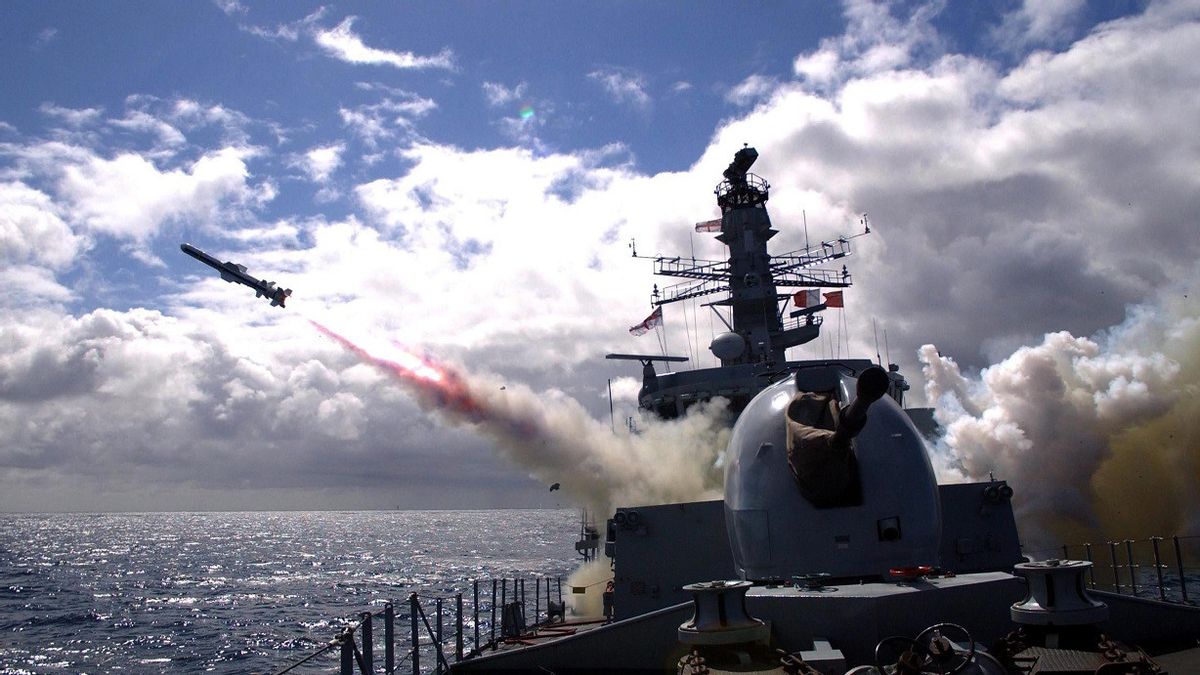JAKARTA - The Russian Navy's advanced radar and ground-based anti-aircraft missile systems can detect the United States Harpoon anti-ship cruise missiles, while the air defense complex operating in the Russian Army is capable of intercepting these weapons, expert Dmitry Litovkin said Monday. .
"If we talk about interception capabilities, we can define the Harpoon with all modern ship-based radar stations and ground-based air defense systems," he explained.
"The Russian Army operates various surface-to-air missile systems that can intercept aerial targets in the range from 3 km to 400 km: namely, Pantsir-S, Tor, Buk to long-range weapons such as S-300, S-400. Everything. able to see and destroy the Harpoon," he explained.
However, continued the Editor-in-Chief of the Military-Technical Cooperation magazine, this does not mean that the Harpoon missile cannot reach its target.
"Missiles of this class pose a real danger because of their low flight capability profile, and now also because of the possible modification of the homing warhead," he said.
The Harpoon is actually a rival to Russia's Kh-35 cruise missile and Ukraine's Neptune weapon developed by the Kyiv-based Luch Design Bureau, as a derivative of the Kh-35, but with one distinctive feature, the expert explained.

"This is primarily concerned with homing warheads. In the 1990s, America was eager to buy Russian-Ukrainian homing warheads. The bottom line is, compared to other cruise missiles that scan space for targets, the Kh-35 flies in 'deaf mode', receive signals from attack targets. In addition, it appears to have been upgraded to operate in swarms compared to the Ukrainian model," Litovkin said.
Earlier, the Russian Ministry of Defense announced on July 8 that sea-launched precision weapons had eliminated two Harpoon missile launchers in the Odessa Region that were sent from the UK.
Ukrainian Defense Minister Oleksii Reznikov said on June 9 that their coastal defense line had been supported by the "highly efficient Harpoon complex."
Meanwhile, US Secretary of Defense Lloyd Austin announced on June 15, after a meeting of the Military Assistance Contact Group to Kiev in Brussels set up by Western countries, a new aid package for Ukraine includes two Harpoon missile launchers.
The Harpoon anti-ship cruise missile was developed by US-based McDonnel Douglas in the 1970s to 1980s and is currently manufactured at Boeing's production facilities.
The missile is produced in three versions: the air-launched AGM-84, the ship-launched RGM-84 and the underwater-launched UGM-84.
The Harpoon develops subsonic speeds and can carry a 225 kg warhead. The missile has an operational range of 120 km to 280 km, depending on the more than 10 modifications currently available.
Military experts estimate that the Harpoon missile is one of the most successful weapons developed in its category. The RGM-84D can change its flight direction at low altitude, which makes it possible to use it in closed water areas and around islands to hide the true direction of launch.
The English, Chinese, Japanese, Arabic, and French versions are automatically generated by the AI. So there may still be inaccuracies in translating, please always see Indonesian as our main language. (system supported by DigitalSiber.id)












